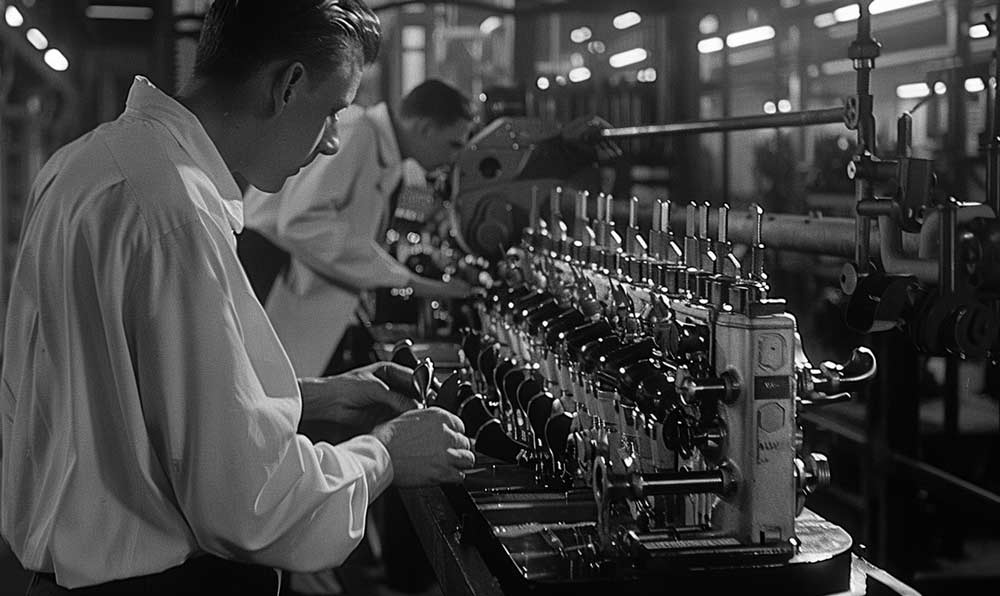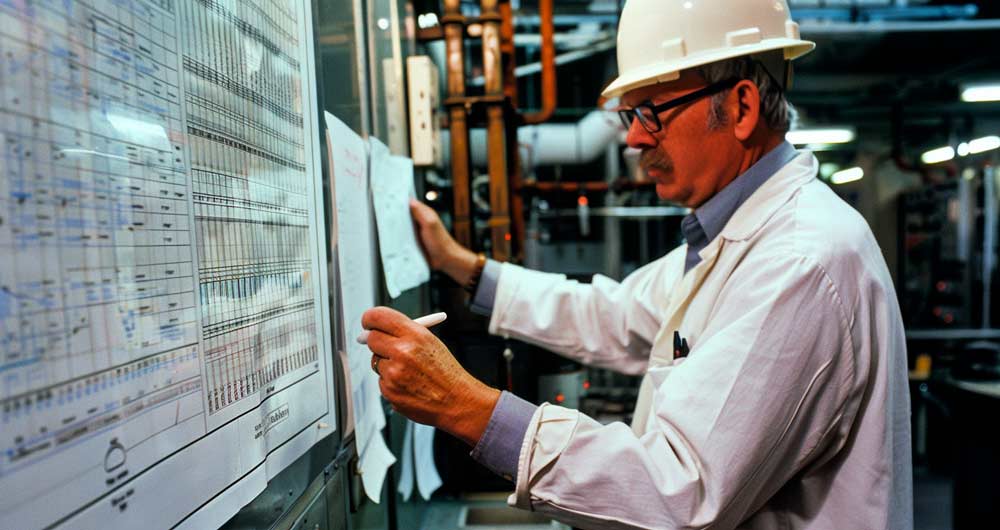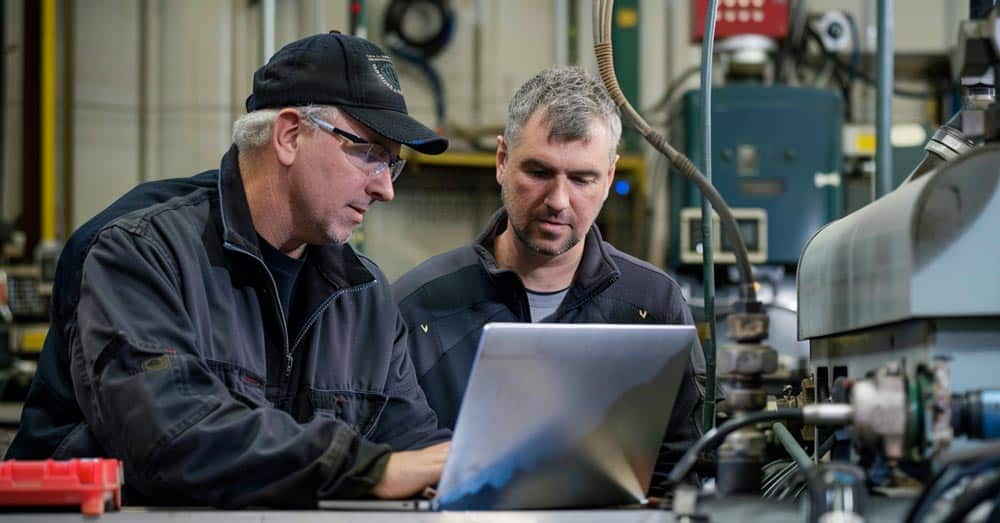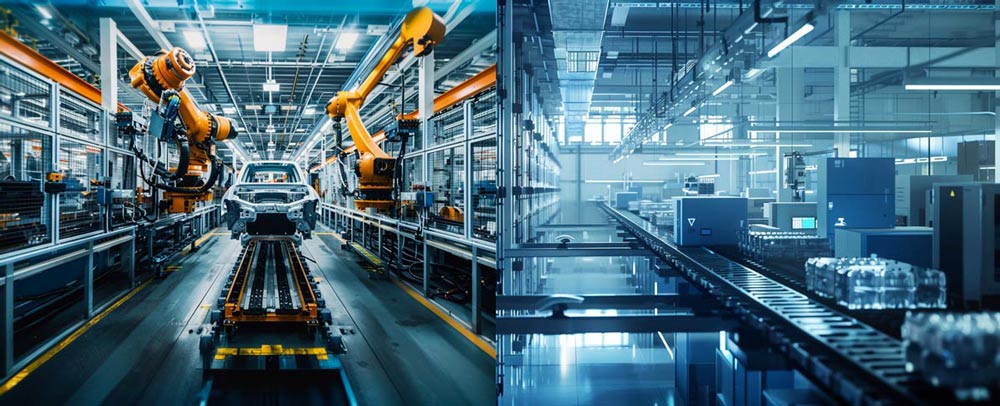What stage of maturity is your approach to quality in?
Achieving excellence in manufacturing quality is a continuous and evolving process. For those quality experts who have been in the business for years, it seems like the bar for excellence just keeps getting higher. New products and new designs present a never-ending stream of new challenges to manufacture.
Our approach to quality control is always changing too. This evolution is not just about the adoption of new technologies; it’s about how deeply integrated and mature these practices are within an organization’s operations. The question of how mature your approach to quality is, therefore, becomes crucial in understanding where you stand in this evolutionary timeline and what steps you need to take to advance further.
Each stage in quality maturity represents a leap in operational efficiency and a shift towards a more proactive stance on quality. Understanding how quality control has evolved and where we are today allows us to predict where we need to go, and how to invest effectively to get there… before the competition does.
Here are the stages of quality maturity, beginning in the Industrial revolution.
Defect detection
Introduced: Late 1800’s
Enabling technology: Assembly lines, interchangeable parts
Tools: Manual inspection, AI-powered vision inspection
Quality control as a formal practice began in the early stages of industrial manufacturing, tracing its roots back to the late 19th and early 20th centuries during the Second Industrial Revolution. This era was marked by the advent of mass production and the expansion of industrial factories, which required a systematic approach to ensure the quality of products.

The introduction of standardized parts and assembly line techniques by pioneers such as Henry Ford significantly increased production volumes but also highlighted the need for methods to maintain consistent product quality. To address this, manufacturers began implementing basic quality inspection procedures, where specialized inspectors would examine products for defects and non-conformity to standards. This early form of quality control was largely reactive, focusing on identifying and removing defective items from production lines after they had already been manufactured.
Some manufacturers are still in this stage. If they are, it is not usually due to any kind of failing of the organization to modernize. There are a few reasons that manufacturers may not need to move beyond this stage, such as:
- In manufacturing products where quality is not a limiting factor, for example in manufacturing disposable products, fast fashion, or low-cost novelty items
- When limitations for data collection and automation exist due to the nature of the process, such as textile manufacturing
- In geographical areas where labour is affordable enough to keep production costs low
Diagnostic quality
Introduced: Early 20th century
Technology: Statistical methods, computing, software, machine sensors
Tools: Statistical Process Control, Six Sigma, Total Quality Management, Root cause analysis tools such as Pareto charts and fishbone diagrams, business intelligence software
A number of tools were developed in the 20th century to advance manufacturing quality, including Statistical Process Control (SPC), Six Sigma and Total Quality Management. These innovations and others, mostly pioneered by American and Japanese automotive companies, added rigor and structure to the discipline of quality control.

Diagnostic approaches to quality came about as demand for mass-manufactured goods soared, and manufacturers needed to find efficient ways to scale their operations and processes, sometimes across multiple lines or in multiple factories. The focus for facilities still in this stage is on controlling the process. The central idea of diagnostic quality is that if everything goes according to a meticulous and predictable plan, defects will not occur. And if a defect does occur, that represents a deviation from the plan.
Checklists, workflows, and schedules became a regular part of working in a factory during the 20th century. As technology progressed, more predictable and precise machines became available to ensure uniformity and reliability. Metrics such as OEE, scrap rate, and First Pass Yield became industry standards. A scientific approach to find the root cause of defects and implement corrective actions became common.
Many factories operating today are still in this stage of quality maturity. The incremental improvements made during the 20th century were very effective in increasing quality and efficiency. These changes were enough for many manufacturers to run their operations profitably for decades and are still relevant.
Today, the global landscape looks a lot different than it did in the mid-to-late 20th century. Labour, raw materials, and energy costs have risen. Complex global supply chains are now the norm, and unexpected political or environmental events can create expensive disruptions. Conformance with increasing health and safety standards and environmental regulations are costly.
Manufacturers in many sectors today are facing thinner margins than ever before. There is increased pressure to reduce waste in production beyond previously acceptable thresholds.
Modern manufacturers in the diagnostic phase likely collect process and test data using machine sensors, and may use it to some degree to solve manufacturing problems, such as informing root cause analysis investigations to varying degrees of success. Any data collected is usually siloed.
Manufacturers in this stage are often aware of opportunities to improve quality and efficiency. Defects occur that they can’t fully explain or be stopped. Unexpected warranty problems still crop up from time to time. Methods such as SPC and root cause analysis investigations are resource-intensive, and quality teams are stretched thin. In 2024, many manufacturers are seeing the limits of their traditional methods, and ready to move to the next phase.
Predictive quality
Introduced: Today, early 21st century
Technology: Cloud computing, mature data collection, machine learning, artificial intelligence
Tools: Predictive quality software
Predictive quality is emerging today due to the pressures on manufacturers to increase their efficiency and reduce costs beyond previous thresholds. Predictive quality is based on the premise that by connecting previously siloed data sources, artificial intelligence can be used to find patterns in manufacturing data that can help solve complex problems in a fraction of the time it would take to do manually.
Industry 4.0 technologies such as cloud computing, industrial AI, and the maturity of data collection methods have made predictive quality possible. The critical step is to operationalize these technologies, so that they can be used in real time, on the shop floor. Getting instant insights into a process and causes of poor quality allows manufacturers to act faster than ever before to prevent quality issues from occurring.
The real-time data analysis of predictive quality can be used for other applications as well. It can be applied to find the root cause of defects faster by identifying the factors with the highest statistical likelihood of contributing to an end-of-line test failure to investigate first. This can shave hours, days, or weeks off root cause analysis.
Manufacturers are beginning to use predictive quality to prevent major quality events from occurring, reducing resources needed for root cause analysis, and making their process and testing more efficient with insights from their data. These methods help to reduce scrap and rework, eliminate bottlenecks, predictive and increase efficiency beyond what was previously possible.

Prescriptive quality
Introduced: The near future
Technology: Co-bots, Smarter machines and sensors
Tools: Prescriptive quality software
Prescriptive quality is the next logical progression beyond predictive quality, and has not yet been fully developed. Prescriptive quality will not only predict defects and identify causal factors through data, but it will order specific corrective actions to be applied to prevent failures. It will blur the line between predictive maintenance and predictive quality.
Efficiency will be gained in this step by making the link between specific process variations and manufacturing output even more clear and specific to engineers and operators. Instead of knowing what signal and station to investigate for the cause of a defect, manufacturers will receive clear instructions when a defect is detected, such as, “Replace the socket on the torque tool on Operation 12 in Line 2.”
Prescriptive quality will be more deeply integrated into the manufacturing environment. It will require more granular data to be collected about machine health and parameters from highly automated and connected manufacturing lines. Material specifications and supplier quality data will need to be easily accessible. Gage repeatability and reproducibility (GR&R) will become paramount for the tool to generate accurate recommendations.
Autonomous quality
Introduced: The far future
Technology and tools: Fully connected factory systems, advanced AI and robotics
Picture a completely automated manufacturing environment where there are no human beings present. One connected system evaluates material inputs, machines and their maintenance, and process output. They interface with the process only virtually to monitor it. The process is controlled by artificial intelligence, which evaluates all aspects simultaneously and can make instant decisions, directing machines to perform maintenance on themselves, or adjust parameters based on outcomes.
Instead of line operators and engineers on the shop floor, factory workers are isolated from mechanical operations. They will become supporting roles for the AI, involved in programming and development of the algorithm. Small teams will be on stand-by for any unforeseen problems, of which there will become fewer and fewer.
This vision represents a dramatic departure from what we know as manufacturing today, and requires technology and systems that are still very expensive, or have not yet been envisioned. Some aspects of it can only be speculated. Perhaps manufacturing will become so precise and accurate that it renders defects obsolete, and our current concept of “quality” becomes a moot point.

Progression through the stages of manufacturing quality
In the future, some manufacturers may skip investment in the Prescriptive quality step entirely, preferring to see legacy facilities to the end of their life. Autonomous quality will require extremely comparative large capital investments and a complete organizational paradigm shift. It would likely be more costly and complicated to retool an existing facility and handle the change management from other methods than it would be to almost “start from scratch”, not only with a greenfield site, but with a new organizational structure.
What phase of quality maturity is your plant in?
Recognizing what phase of quality maturity a manufacturing plant is in is important. Understanding the coming technological changes allows smart business decisions to be made on what new technology to invest in and when. For example, adding a new AI-powered vision system may digitize an inspection process, but it is still an example of a modernized Defect detection method. Investing in new Quality Management system (QMS) software may add a better user experience and more features, but this is just a digitized way of using older Diagnostic quality methods.
In 2024, Investments towards implementing predictive quality are a good choice, as they can allow the next tier of operational efficiency to be unlocked today. Some large manufacturers are already putting heavy investments into developing technology and tools that will make Autonomous quality and factories a reality as soon as possible.
Acerta is a pioneer in developing predictive quality technology. Our team has visited many shop floors and board rooms to learn how we can best create a product that helps manufacturers jump to the next tier in quality maturity. Book a meeting with us to discuss where your facility is at. Even if you aren’t ready to implement LinePulse, our predictive quality tool, we can provide insight on how you can move to the next stage from where you are at today.
Share on social: